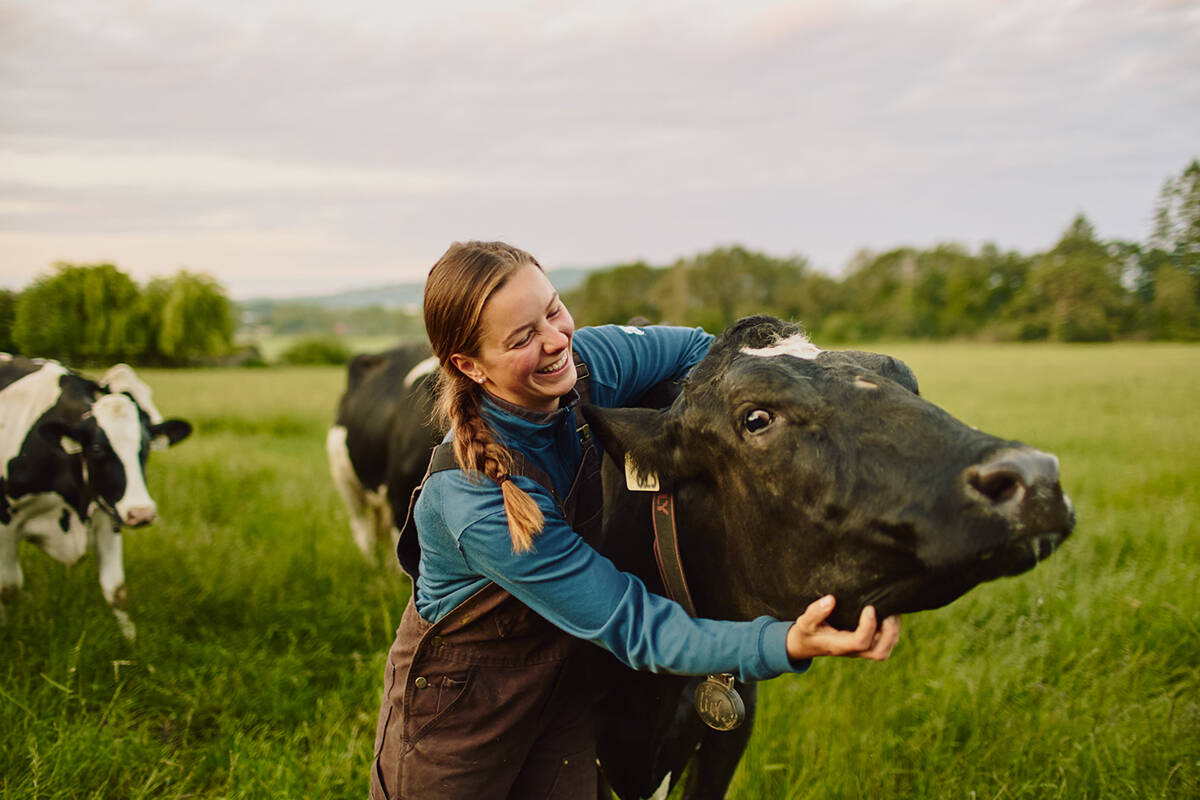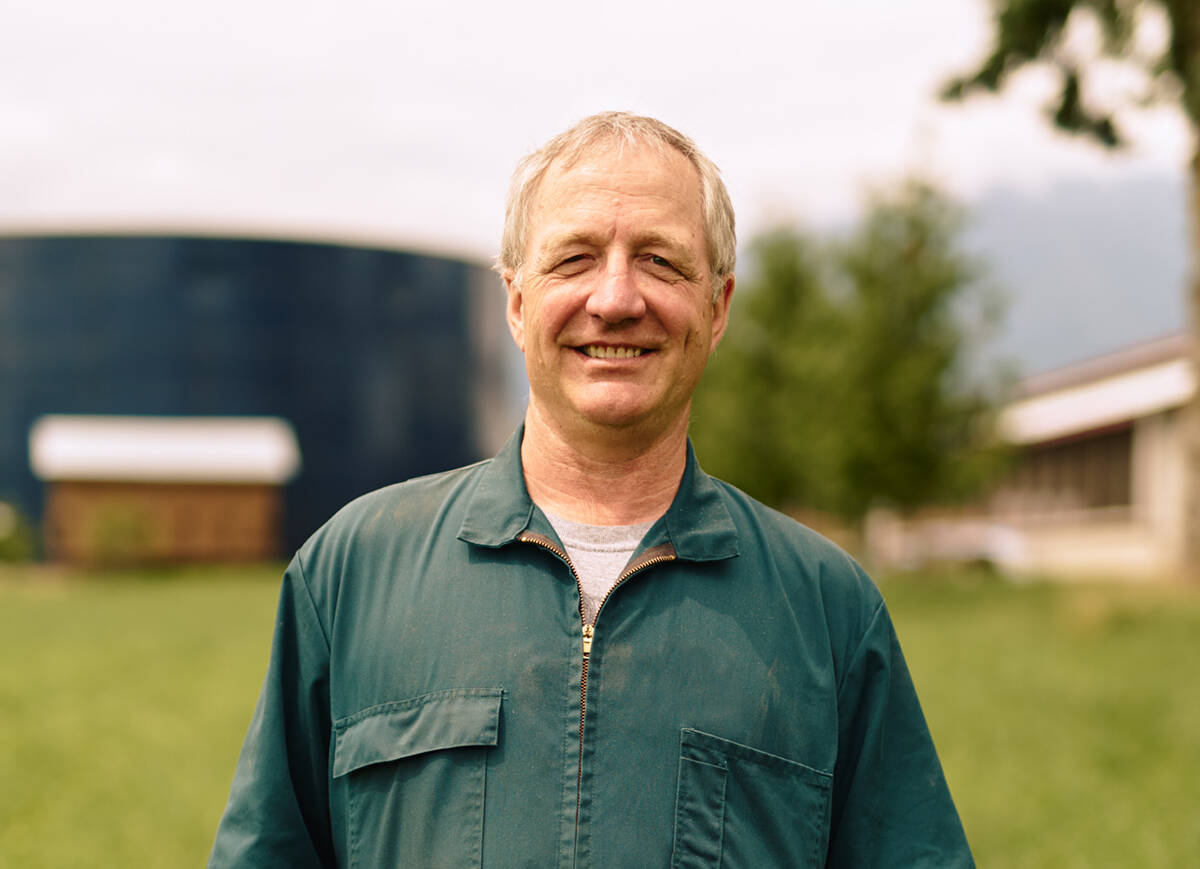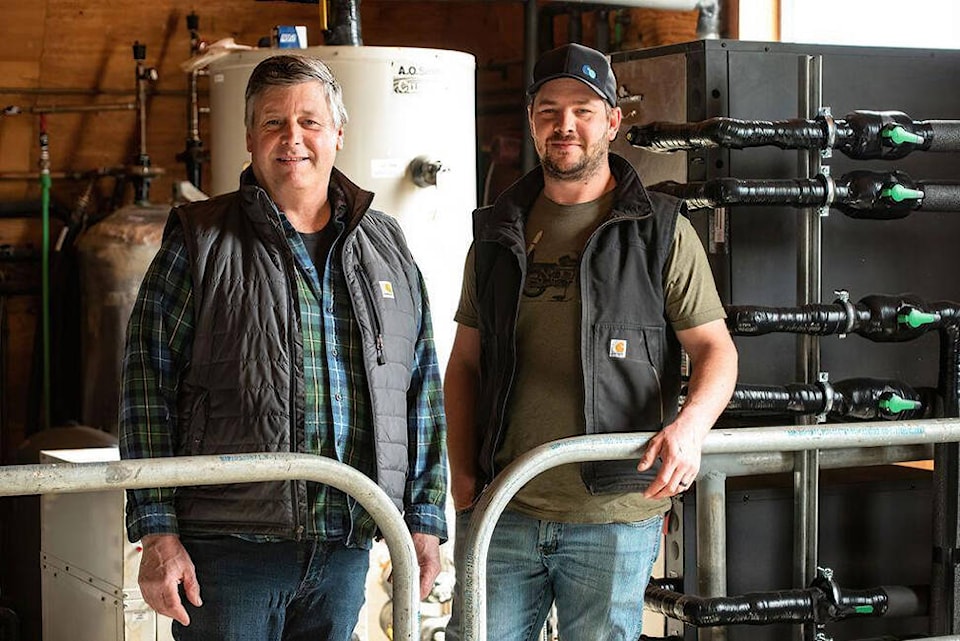When the Stobbe family moved from Abbotsford to Mara, BC, in 2003 they immediately had a problem to solve. Thank goodness farmers are problem-solvers and see every challenge as an opportunity to improve efficiency.
“It’s important to cool raw milk as quickly as possible,” explains AJ Stobbe. “Milk grows bacteria when it’s warm. The longer it’s warm, the more bacteria it grows.”
In Abbotsford the Stobbe family used electricity to rapidly cool their raw milk from 38 degrees Celsius to 2.5 degrees Celsius and natural gas to heat their barn and other buildings. However, their new farm in Mara didn’t have access to natural gas, and they didn’t want to use propane to heat buildings. So they followed the lead of cutting-edge farmers in Europe and installed a geothermal system - not only does it draw heat from the milk, it also repurposes that heat to warm the barn, offices and their family home.
“Our primary goal was to invest in our cows, keeping them healthy and productive. But it’s a real source of pride that we’ve found a way to use this technology to heat the floor in the barn and other buildings as well,” Stobbe says.
Today, the farm doesn’t use any fossil fuels other than diesel in its tractors. They’ve also recently started a blueberry farm, and are committed to keeping it insecticide-free so it’s a safe place for pollinators.
“Sustainability is a balance. We’re still running a business, so if we don’t make a profit we’re not sustainable long-term. If creation around us dies or our cows are unhealthy, that’s not sustainable either,” Stobbe says. “Anyone who comes to our farm for a tour immediately sees how much we care. We love showing people everything we’re doing.”

Sustainable farming for future generations
On the Saanich Peninsula on Vancouver Island, is also focused on longevity through sustainability.
“We still have cows in barns my great-grandfather built. Preserving that family heritage is pretty big for us,” she says. “My family’s been farming for four generations, and I would love for the family to continue farming here for another four generations. We can’t do that if we don’t take care of the land and the animals.”
They’ve dug ditches to capture rainfall reducing erosion and preventing flooding while also providing a source for irrigation. They have plans to add solar panels, and plant fast-growing Empire apple trees that will sequester carbon dioxide and support pollinator populations.
“We won’t have any food if we don’t have any bees,” Mickey says. “There are a lot of really cool sustainable practices I would love to do, but it takes time to fulfil them all.”

Caring for the environment, the people and the cows
Back on the mainland in Agassiz, is also a careful steward of the land. When his parents started in 1960 their dairy farm was rural, but now houses have sprouted nearby. So he’s worked with the community to plant hundreds of native trees and shrubs and install a walking trail on the farm’s perimeter that’s free for his neighbours to use.
“This is a beautiful place to live, a great place to raise kids,” he says. “Your farm environment should be about contented animals and contented employees, who are fairly compensated, well treated, and where educational opportunities are encouraged. You take care of the environment, you take care of people, and you take care of the cows.”
Learn more about sustainable farming practices at and on , and .

